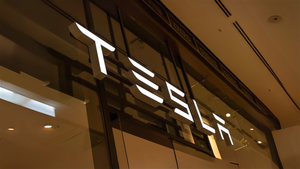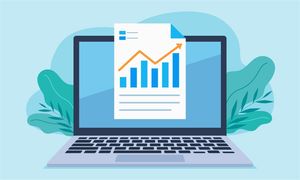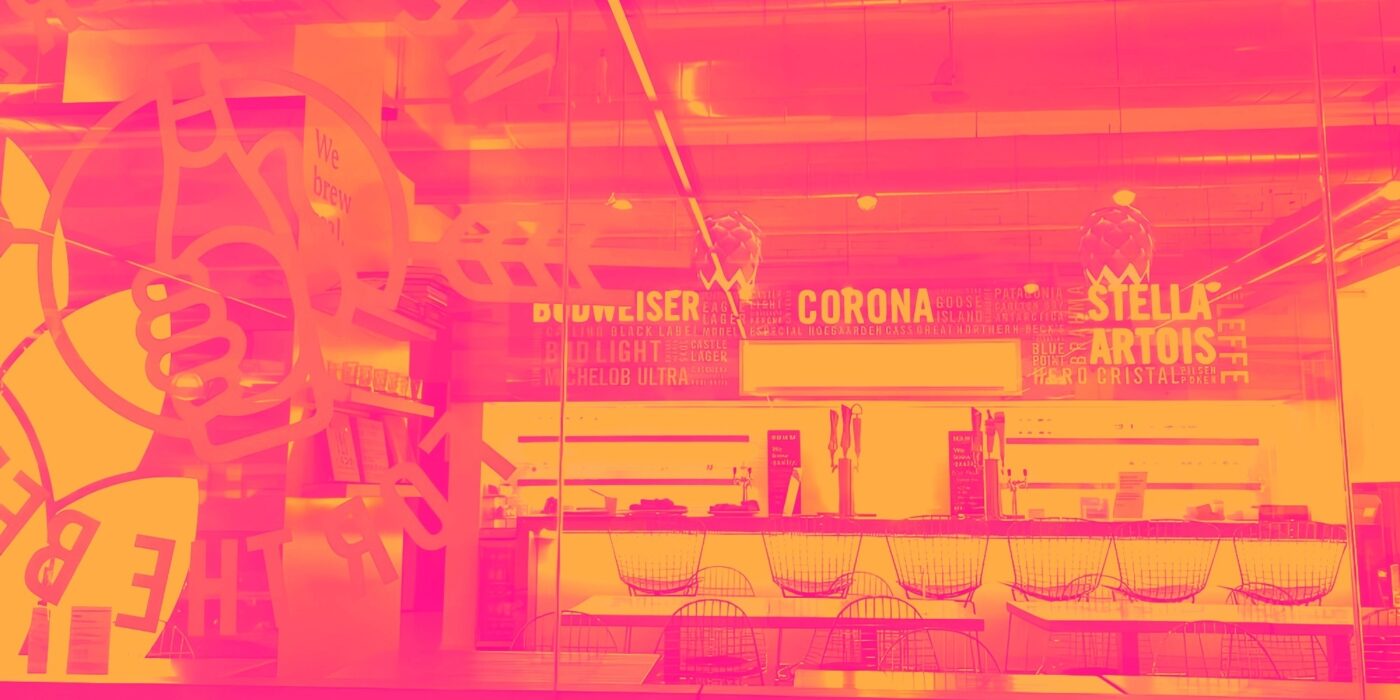
Over the past six months, Anheuser-Busch’s stock price fell to $61.52. Shareholders have lost 6.1% of their capital, disappointing when considering the S&P 500 was flat. This might have investors contemplating their next move.
Following the drawdown, is now an opportune time to buy BUD? Find out in our full research report, it’s free.
Why Does Anheuser-Busch Spark Debate?
Born out of a complicated web of mergers and acquisitions, Anheuser-Busch InBev (NYSE: BUD) boasts a powerhouse beer portfolio of Budweiser, Stella Artois, Corona, and local favorites around the world.
Two Positive Attributes:
1. Economies of Scale Give It Negotiating Leverage with Suppliers
With $59.77 billion in revenue over the past 12 months, Anheuser-Busch is one of the most widely recognized consumer staples companies. Its influence over consumers gives it negotiating leverage with distributors, enabling it to pick and choose where it sells its products (a luxury many don’t have). However, its scale is a double-edged sword because there are only a finite number of major retail partners, placing a ceiling on its growth. To expand meaningfully, Anheuser-Busch likely needs to tweak its prices, innovate with new products, or enter new markets.
2. Operating Margin Reveals a Well-Run Organization
Operating margin is an important measure of profitability accounting for key expenses such as marketing and advertising, IT systems, wages, and other administrative costs.
Anheuser-Busch has been a well-oiled machine over the last two years. It demonstrated elite profitability for a consumer staples business, boasting an average operating margin of 24.9%. This result isn’t surprising as its high gross margin gives it a favorable starting point.
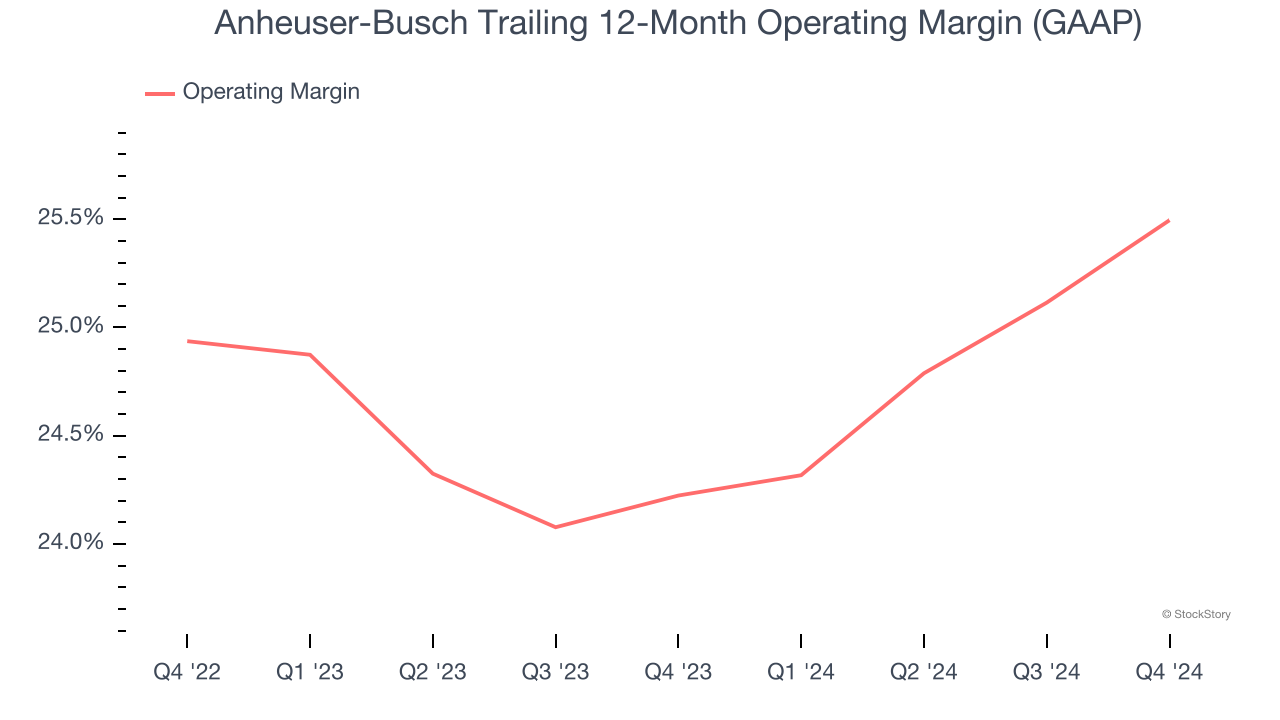
One Reason to be Careful:
Demand Slipping as Sales Volumes Decline
Revenue growth can be broken down into changes in price and volume (the number of units sold). While both are important, volume is the lifeblood of a successful staples business as there’s a ceiling to what consumers will pay for everyday goods; they can always trade down to non-branded products if the branded versions are too expensive.
Anheuser-Busch’s average quarterly sales volumes have shrunk by 1.5% over the last two years. This decrease isn’t ideal because the quantity demanded for consumer staples products is typically stable. 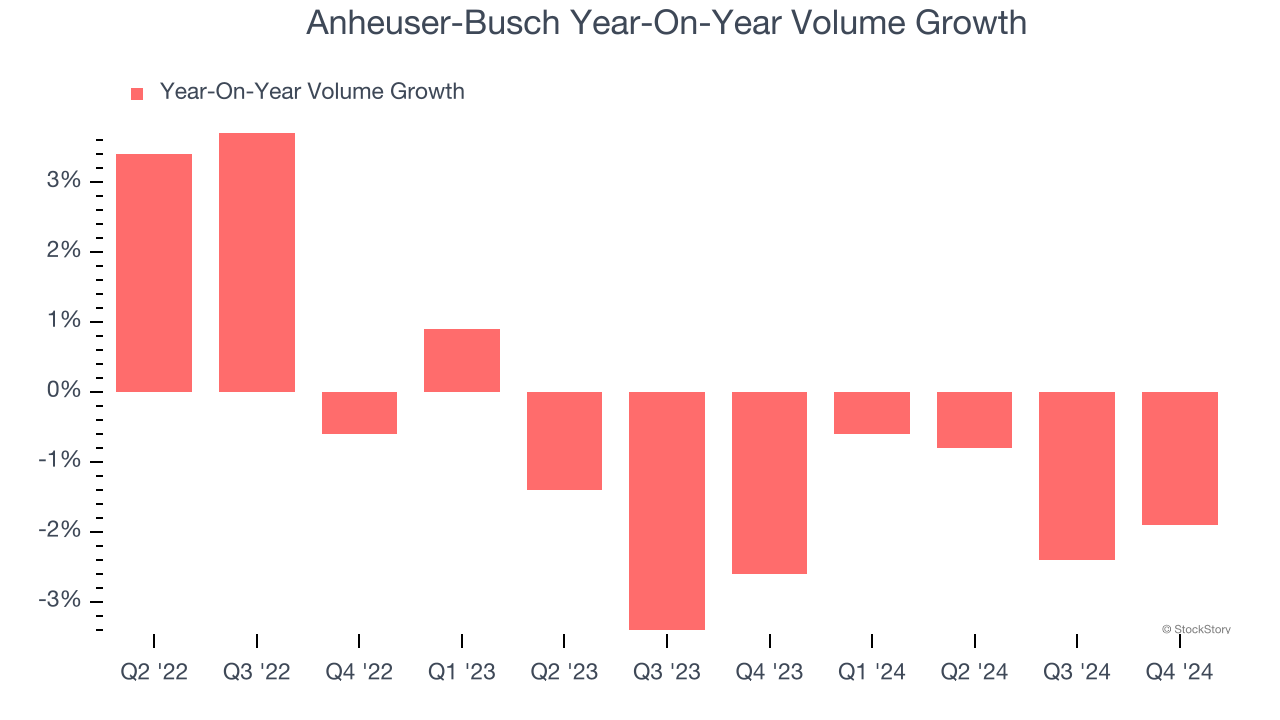
Final Judgment
Anheuser-Busch has huge potential even though it has some open questions. After the recent drawdown, the stock trades at 7.9× forward EV-to-EBITDA (or $61.52 per share). Is now a good time to initiate a position? See for yourself in our comprehensive research report, it’s free.
Stocks We Like Even More Than Anheuser-Busch
With rates dropping, inflation stabilizing, and the elections in the rearview mirror, all signs point to the start of a new bull run - and we’re laser-focused on finding the best stocks for this upcoming cycle.
Put yourself in the driver’s seat by checking out our Top 9 Market-Beating Stocks. This is a curated list of our High Quality stocks that have generated a market-beating return of 175% over the last five years.
Stocks that made our list in 2019 include now familiar names such as Nvidia (+2,183% between December 2019 and December 2024) as well as under-the-radar businesses like Comfort Systems (+751% five-year return). Find your next big winner with StockStory today for free.
